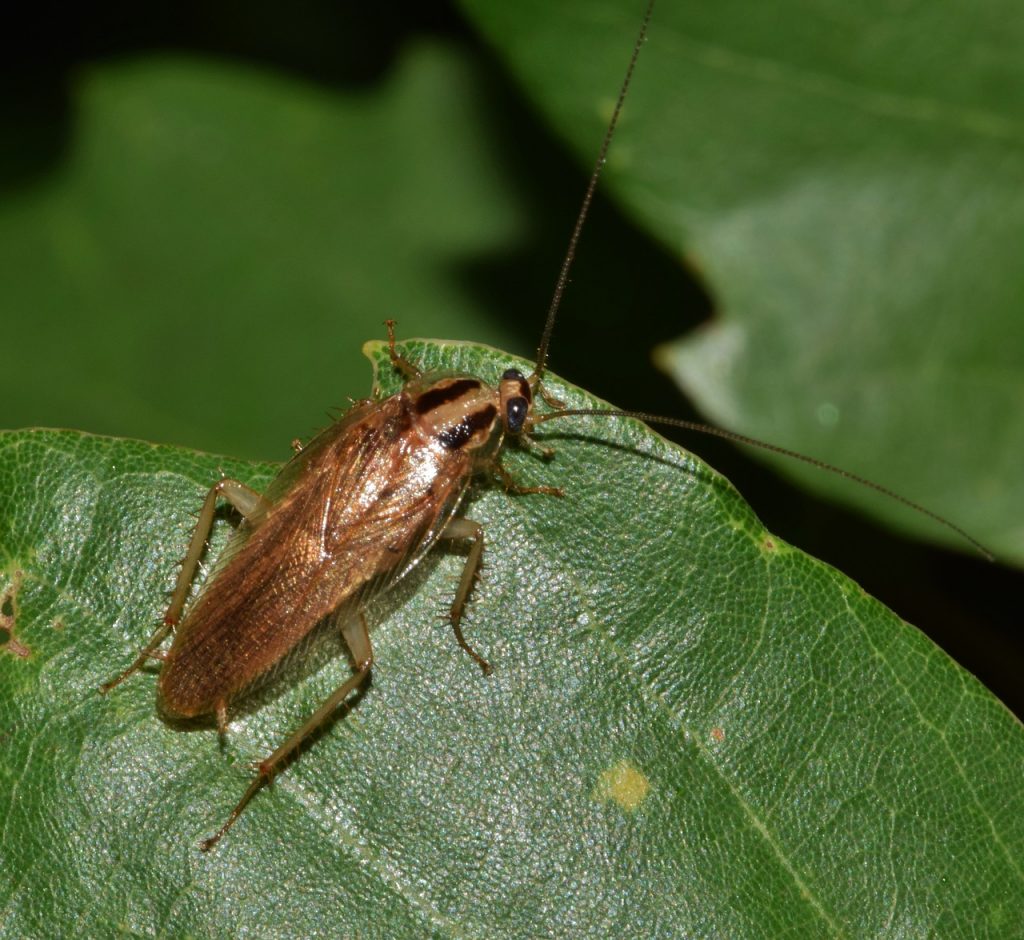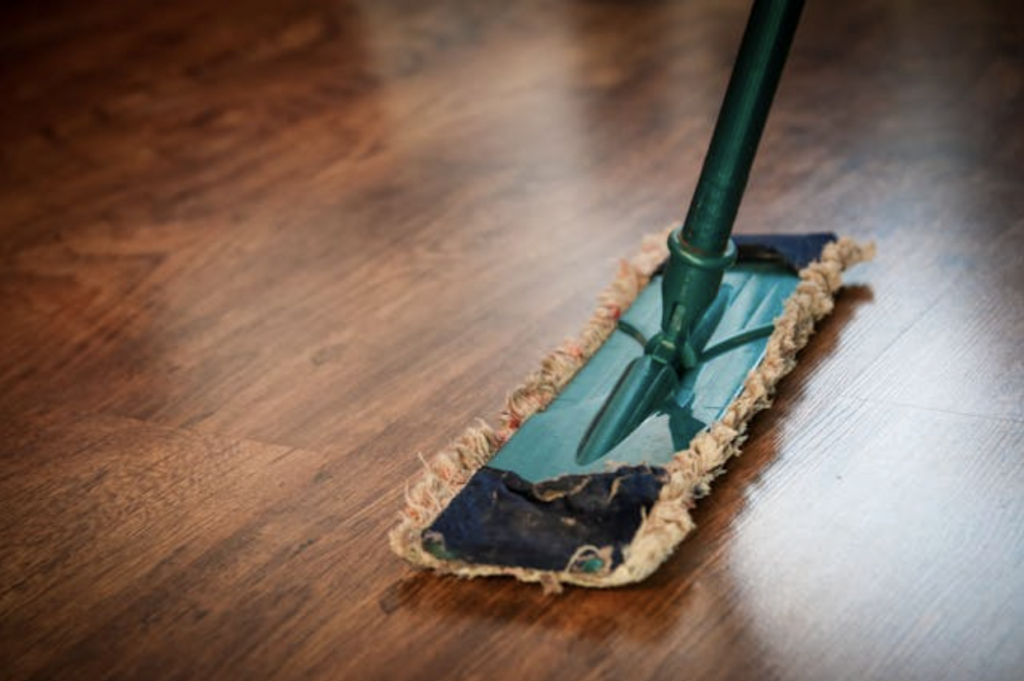Do you want to know how to get rid of German cockroaches? Don’t worry! We have you covered.
We’ve all heard the horror stories of infested restaurant kitchens and motel rooms, so the last thing you want to see in your home is a cockroach. While these tiny pests are more scared of us than we are of them, seeing one in your home can be shocking.
Over 4,000 species of cockroaches are scattered around the world, with a few living in the United States. However, only a few species actually inhabit American homes. Don’t let that number fool you, though. The U.S. Census Bureau reported that over 14 million homes spotted a cockroach inside in 2020!
Having a cockroach inside your home is taxing and can leave you scrambling for a solution. Your home is a place away from the outside world, and it’s stressful when a piece of it lives with you. Here’s everything to know about how to get rid of German cockroaches.
Where Can I Find German Cockroaches?
Surprisingly, German cockroaches do not originate from any European country. Instead, these pesky insects likely came from areas in Africa or Southeast Asia. Today, they infest nearly every continent except Antarctica. Like most cockroaches, they cannot survive extreme cold, making the frozen landscape one place you will never find them.
German cockroaches need warmth, food, and moisture to survive, which is why they stick close to humans. They cannot handle freezing temperatures and will not last long without a steady food source.
They will move into humid areas with suitable amounts of food and water, like restaurants, grocery stores, and even residential homes. These cockroaches also thrive in apartment complexes where they can easily move through units.
German Cockroach Identification
Before you can get rid of German cockroaches, it helps to know what they look like. Unlike other common species, the German cockroach is pretty small, hardly growing larger than half an inch. If you see a bigger roach, you are likely dealing with a different species.
German cockroaches are light tan with two black lines that begin behind their heads and extend along their backs.

German cockroaches look virtually indistinguishable from Asian cockroaches, but their behaviors can help set them apart. Asian cockroaches prefer outdoor environments and thrive in the southern United States. German cockroaches, however, live all over the country and frequently invade homes.
One of the biggest differences is how they move. While both have wings, only Asian cockroaches are strong fliers. German cockroaches rarely take to the air and can only glide short distances. If you ever see one lift off, it is usually just a quick hop rather than true flight.
But what do these pests actually look like?
While male and female German cockroaches share the same design, they have physical characteristics that differentiate one from the other. Females are larger and wider, while males have slender bodies that narrow near the end. Most live around 100 days, though some can survive up to 200 with the right conditions.
During that time, females reproduce at an alarming rate. A single female lays around 40 eggs at a time and produces over 300 eggs in her lifetime. Instead of leaving her eggs in hidden crevices, she carries them in an egg sac called an ootheca until they are ready to hatch. Once the tiny nymphs emerge, they mature in under four months and quickly start the cycle again.
Signs of a German Cockroach Infestation
Once you see a cockroach, there’s a good chance another one is lurking under the fridge or inside a cabinet. Cockroaches often congregate in humid areas, so while you may see one or two running on your floors, more may be nearby. It’s better to assume that there are more in your home, so you can effectively handle the possibility of a large infestation.
One of the most obvious signs of an infestation is cockroach droppings. These look like tiny, dark brown or black specks, similar to ground coffee or black pepper. You’ll often find them near food, along pantry shelves, in cabinets, or in the corners of rooms where roaches travel.
Another telltale sign is the presence of ootheca, which are cockroach egg sacs. These small, brown casings are about the size of a fingernail and can hold dozens of eggs. German cockroaches are unique because the females carry the ootheca attached to their bodies until the eggs are ready to hatch. Once the nymphs emerge, the empty casings are left behind.
German cockroaches also produce a slight musky odor when in groups. If you notice an unusual scent that lingers, there could be a bigger infestation than you realize. The stronger the smell, the more roaches are likely hiding nearby. This smell also draws other roaches to the area, so act quickly before their numbers grow!
Because roaches are nocturnal, they usually stay hidden during the day and come out at night to search for food. That doesn’t mean you can’t spot one during the morning. If you see them during the day, you can assume there are others somewhere within your home.
Common Areas for German Cockroaches
German cockroaches do not have physical nests, unlike termites, bees, or ants. Instead, they gravitate together in warm areas near water and food. Since they prefer to stay hidden, spotting them requires some effort. Grab a flashlight and check under your stove, sink, or refrigerator for signs of activity. While it may be tempting to kick an ice cube under the fridge, doing so provides a water source that makes it easier for roaches to survive without venturing out.
These pests aren’t picky eaters. German cockroaches prefer sugary and starchy substances but will eat almost anything. When food is scarce, they will even consume dead members of their own colony!
No food is safe when they are around, and these insects will go to great lengths to get their nutritional fix. Because your pantry is home to a multitude of foods, we recommend you check for damaged packages or even signs of the roaches themselves.
If they can’t access your cereal or snacks, they will turn to other materials like books, furniture, and garbage.Inspect these areas for hidden roaches or any damage, and don’t forget to check inside tall cabinets where they may be hiding out of reach.
If your home has a basement, look around in damp areas for signs of roaches. They could be hiding behind water heaters,in old boxes, or anywhere they’ll go unnoticed. You may not have any need for last year’s Christmas decorations, but German cockroaches will gladly take up residence in places you rarely use.

Bathrooms are another area to check out. Because this part of your house is regularly humid and damp, roaches are drawn to showers, under-sink cabinets, and around leaky pipes. If there’s a plumbing issue, they will burrow close to the water source. Be sure to check drawers, cabinets, and any dark corners for signs of activity.
You can also find these pests hiding out in your dishwasher. The inside stays damp between cycles, and any leftover food particles give roaches an easy meal. While running the dishwasher will kill any pests inside, that does not always stop them from returning.
Any small cracks or openings could house hoards of these pests.Roaches squeeze through tiny openings to get inside, then settle into walls, floor crevices, and other hidden spaces. If you spot any gaps, shine a flashlight inside and watch for movement. The sudden burst of light might make them scatter, but it will also give you a better idea of the problem.
Do Roaches Cause Home Damage?
These pests can wreak havoc within your home, but can they leave lasting damage? Unlike termites or mice, German cockroaches do not chew through wood, insulation, or other structural materials. Their main target is food, so your home itself is generally safe from destruction.
In extreme infestations, roaches can become a bigger problem. Large populations may start nesting inside electronics, which can lead to malfunctions or short circuits. However, they usually prefer to stay closer to food and moisture, so this type of damage is less common.
While your home is safe, these pests can still feast on some unlikely items. You could see signs of wear on your leather furniture, belts, and shoes. Because roaches thrive in humid areas, you may find one crawling on your bars of soap, looking for a good meal. These pests love a good book too. However, they’re more likely to consume the physical pages and glue instead of the written words.
Health Concerns of a Roach Infestation
Besides being a nuisance, German cockroaches also pose a danger to your health. Because they often infest kitchens, they have plenty of opportunities to spread bacteria and germs, like Salmonella, E. coli, and Staphylococcus aureus, all of which can cause serious gastrointestinal issues.
Eating contaminated food can lead to symptoms like nausea, vomiting, diarrhea, and stomach cramps. In severe cases, these infections can cause dehydration or require medical attention.
Cockroaches can also exacerbate asthma symptoms and irritate existing allergy problems. The American College of Allergy, Asthma & Immunology reports that proteins in roach saliva, droppings, and shed body parts act as airborne allergens. Inhaling these particles can lead to sneezing, coughing, congestion, and itchy eyes. For asthma sufferers, exposure can cause more frequent and severe attacks. If you suddenly experience heightened allergy symptoms or worsening asthma with no other cause, consider looking around for signs of an infestation. Doctors can also help determine if your allergies stem from these pests through an allergy test.
While they can make you sick, these pests do not usually cause any physical harm. German cockroaches avoid interaction by hiding in small, tight spaces. Stepping near one of these insects is enough to send it running the other way.
Although German cockroaches can bite, it is extremely rare and not dangerous. If you suspect that a roach has bitten you, keep it clean and avoid scratching or picking at the area.
Roaches are not aggressive and do not seek out humans as a food source. They only resort to biting if their nest has completely run out of other options. Since they thrive in environments where food is abundant, this scenario is highly unlikely in most homes.
How to Prevent a German Cockroach Infestation
Preventing an infestation is easier than dealing with a flood of hard-to-kill insects. Knowing how to get rid of German cockroaches is vital, but prevention methods can help steer them away from your kitchen.
Whether you’re interested in completely deterring cockroaches from entering your home or you want to make sure they never come back, try these tips to keep these pests out of your home.
Keep your Home Clean
A clean home is one of the best ways to keep German cockroaches away. Wipe up any lingering crumbs and promptly wash dishes, so the cockroaches will have nothing to eat. Dispose of or cover grease, pet kibble, and any non-perishable foods, as this domesticated species will gravitate toward any food source.
Roaches are also drawn to moisture, so eliminating water sources is just as important as keeping food out of reach. Wipe down damp areas and drain any standing water in your sink, shower, or dishwasher. Also, frequently check your sink or fridge for possible leaks. Not only will this cut down on your utility bill, but this is also how to get rid of German cockroaches! They cannot live more than a few days without water, so they will find other areas to infest if your house isn’t hospitable.

If you have a pet, clean their waste promptly. Dispose of used dog pads, newspaper, or cat litter as your animals use them. Leaving droppings out for a significant amount of time will attract roaches. After they feast on droppings, they will move and spread fecal matter around your home. This could contaminate your food and previously cleaned surfaces.
Taking out the trash regularly can also make a big difference. Bags of trash will encourage German cockroaches to crawl inside to search for the food they’ve thrown away. Opt for a covered trash can inside your home so it’s harder for these pests to crawl and look for a meal. If you have large amounts of leftovers waiting in your trash, dispose of it sooner than later, as it could prevent a more extensive infestation.
Close off access to your Home
Roach infestations often carry a negative stigma, but they’re not always a sign of poor hygiene.While they move to areas with supple food sources, keep in mind that even the cleanest residence can be plagued by these insects. These pests will make their way into your house through small cracks, open windows, doors, or any gaps not properly sealed.

Because they can fit through tiny crevasses, make sure to repair any noticeable holes inside and outside your home. German cockroaches typically hide and nest in these tight spaces, making it hard to combat infestations. Mend holes in your roof and fix broken windows as well. While German cockroaches cannot fly, they can still crawl up and on structures with their tiny claws.Closing off these areas before they become a problem helps prevent them from finding a place to hide.
Roaches can also hitch a ride into your home. Be cautious when bringing in cardboard boxes, secondhand furniture, or used appliances, as these can carry hidden roaches or eggs. If you receive a package, inspect it before bringing it inside to avoid any unwanted surprises.
If you visit anyone’s home with cockroaches, check all your belongings to ensure one isn’t hiding. While this is unlikely, remain diligent in areas with large roach populations in case one crawls into your bag.
Can Other Predators Keep Them at Bay?
Because German cockroaches flourish in residential or commercial areas, they do not have many natural predators to keep them at bay. While they crawl in through cracks, they do not rely on the outdoors for survival.
Spiders can attack cockroaches, but the introduction of spiders would not quell a large infestation. Plus, it would be difficult to deal with more unwanted guests. Some animals eat cockroaches, but it is unlikely to make a difference when the roaches are already inside.
Relying on other insects or pests is not how to effectively eliminate cockroaches. You should focus on concrete methods, like professional pest control, to fully eliminate these pests from your home.
How Can I Eliminate an Infestation?

So, the biggest question is: How do you deal with these pests when they’re already in your home? Prevention methods are ideal before the start of an infestation, but you’ll want to resolve the problem quickly at the first sign of the insects.
Because of their quick reproduction rate, removing them from your property is nearly impossible without eliminating them completely. So, if you already have an infestation, it’s better to look for ways to rid yourself of the roaches rather than worry about moving them elsewhere.
Unfortunately, German cockroaches are surprisingly strong. Their hard exoskeletons can hold up against hard blows, so stepping on them isn’t going to make much of a dent in the overall population.. These pests are also quickly adapting to many storebought pesticides, making them harder to kill with typical chemicals.
The infestation won’t die overnight, either. It can take around two to three weeks to eliminate all of the roaches in your home. However, you still have options when it comes to stopping an infestation, and taking prompt action can quickly rid your home of unwanted pests!
How to Get Rid of German Cockroaches in Electronics
While unconventional, you could find German cockroaches living in electronics like desktop computers, televisions, gaming consoles, and wifi routers. Because these devices are warm and not typically handled by humans when in use, cockroaches have the perfect home to nest in. However, combatting these pests is difficult when they’re inside expensive items.
You can’t easily spray down your electronics or pour in loose powders as it could compromise the internal components of your devices. To spare your gadgets, place everything in air-tight bags without any holes for the roaches to escape. Resist the urge to grab anything for at least two weeks or longer to give ample time for them to die.
How to Get Rid of German Cockroaches with Professional Help
Home remedies might help with a few stray roaches, but they won’t wipe out a full infestation. Cockroaches are incredibly resilient, multiply fast, and can survive in even the harshest conditions. If DIY methods aren’t making a difference, it’s time to bring in the professionals.
The best way to handle any German cockroach problem is to turn toward proof. pest control. Our highly trained technicians know how to get rid of German cockroaches and can save your home from pests.
Over the course of two visits, proof. technicians will inspect your home and apply specialized treatments to target current infestations and kill any additional roaches that have grown after two weeks.
Don’t let roaches call the shots! We know how to get rid of German roaches in no time. Say goodbye to pests and hello to a happy home. Contact proof. for effective cockroach solutions.

